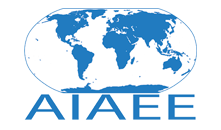The Journal of International Agricultural and Extension Education: A Brief History
In 1994, Dr. Donald Meanders, Professor Emeritus at Michigan State University and one of the founding members of the Association for International Agricultural Education (It would later be changed to the Association for International and Extension Education or AIAEE), wrote the first article for the inaugural issue of the Journal of International Agricultural and Extension Education. In the article, he touched on the history of the association, its need and purpose. The 1980’s and early 1990’s had been a tumultuous time for agriculture and especially in the realm of international relations between agricultural trading partners. Conflicts over U.S. agricultural subsidies had led to stalled markets and production shortcomings. Dr. Meanders, recognizing the growth of international graduate students in the U.S., saw an opportunity for the improvement of extension and education programs at the international level which would have a long-term impact on American market stability and the challenges of the age.
He stated:
Sometimes you just have to take time to say the obvious. There is an unprecedented need for agricultural education, formal and non-formal, as we move forward toward the twenty-first century. Increased population, greater demand for food, international trade controversies centered on agricultural products, and the obvious deterioration of the environment in many parts of the ward, all are clear signals for the need for more and better education, including agricultural education.
Almost thirty years later, we can agree that these problems still exist, and some are perhaps becoming more of a challenge than ever. We continue to believe, as Dr. Meanders did, that education in and about agriculture in international settings is a part of a larger solution to what we now term Food Security. During this time, we have experience extensive growth in the internationalization of our graduate programs, allowing extension professionals and researchers to establish connections to countries and regions of the world through relationships built in U.S. universities. Since its inception in 1994, the JIAEE has been the premier publication for documenting the research, evaluation and programing efforts of our extension and educations professionals from around the world.
The original target audience for the journal was intended to include professionals from areas outside agricultural and extension education as well. It was envisioned that professionals from fields such as sociology, agronomy, economics, animal science and others would find value in the research presented in JIAEE and would submit appropriate manuscripts as well.
The journal has grown and diversified over its lifetime to include submissions from every region of the world and a wide range of related topics. Since that first issue was published, we have published 29 volumes and over 80 issues. This accounts for almost 1000 independent, peer-reviewed articles in our library that is now available to the world via open access. Over the years, we have experienced several changes. In September of 2000 the editors created an online presence and in 2006, the journal stopped publishing the traditional bound paper issues and moved to an exclusively online format, making the journal less expensive and accessible anywhere in the world to our members. More recently, we have continued the philosophy of getting information to those who need it by moving to an unpaid, open-access platform ensuring extension and education professionals around the world have our journal at their fingertips without subscription costs, publishing costs or paywalls.
As in 1994, we continue to look toward the future understanding agricultural education is essential for improving production and marketing of our agricultural products and ultimately improving Global Food Security.
Timeline:
- 1994
- Journal of International Agricultural and Extension Education published for first time as the official publication of the Association for International Agricultural and Extension Education (AIAEE)
- Jack Elliot, Editor
- Published two issues (spring, fall) per year by the University of Arizona
- 1997
- Added a third (summer) issue
- 2006
- Added an online version hosted at AIAEE website
- Retained print version
- 2010
- Discontinued print version of the journal
- 2020
- Added an annual special issue bring the total to four issues per year (Winter, Spring, Summer, Fall)
- 2021
- Changed publisher to New Prairie Press and AIAEE
- Moved journal submission, management, and hosting to New Prairie Press, in cooperation with Kansas State University



